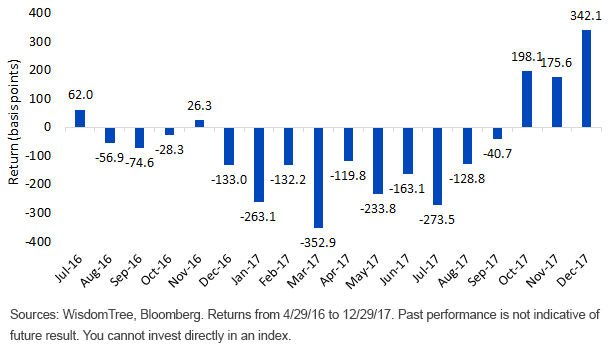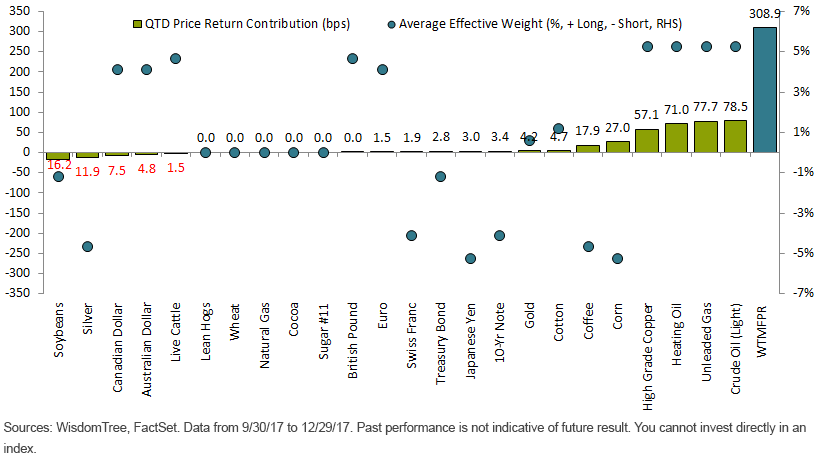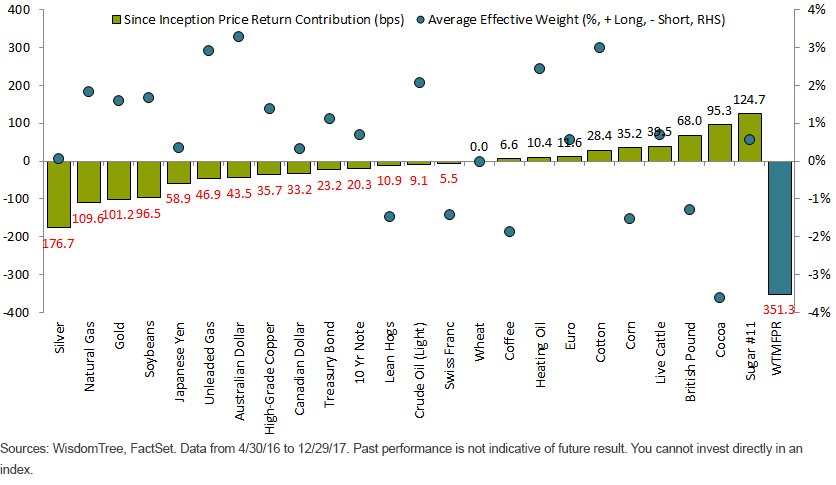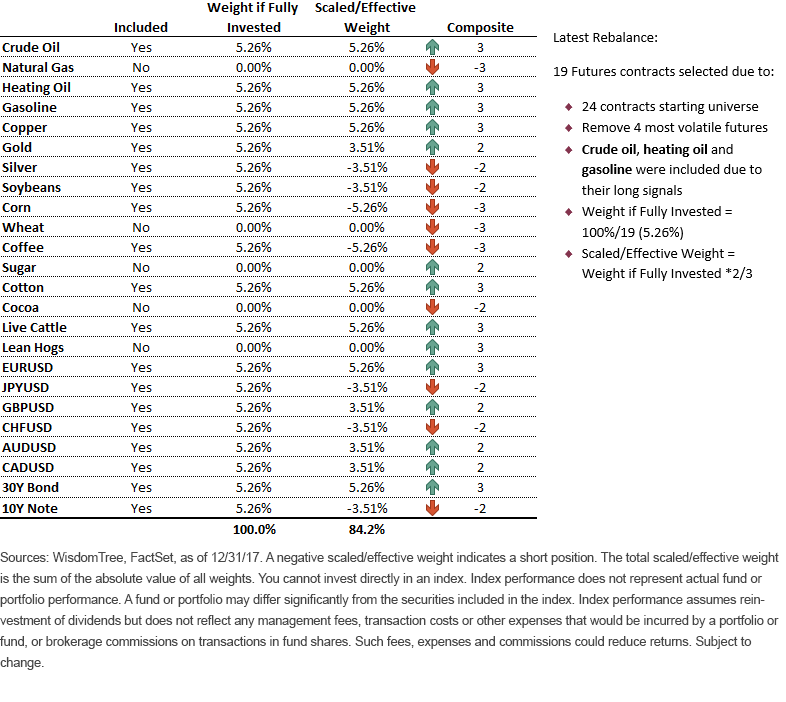Are Managed Futures Starting to Work Again?


Managed futures strategies have been among the most disappointing investment categories over the last four to five years. These strategies were designed to have negative correlation to both stocks and bonds—and in what has been a strong equity market, the negative correlation has come through, with flat to negative returns for many managed futures strategies.
In recent years, commodities were continually being whipsawed, with few persistent trends these long/short futures strategies could capitalize on.
In mid-2016, WisdomTree developed a new managed futures index that looks to incorporate multiple momentum periods to determine and scale long or short positions. It furthermore includes a volatility signal that tries to identify commodities that are at higher risk of whipsaw movements and looks to avoid positions in those commodities.
Re-establishing Trending Markets?
After a trendless market where this Index had low to negative returns, the fourth quarter of 2017 saw the strongest three-month return for this strategy in its short life span.
Rolling Three-Month Performance

Contributing the most to these gains was the rise in oil prices and energy-related commodities, which the Index established long positions in starting in August and September, depending on the specific commodity. It maintained those positions throughout the fourth quarter, which was a significant positive contributor. The same goes for copper, which showed strong gains in the fourth quarter as well.
There were only modest losses on commodities such as silver and soybeans, which resulted from short positions in those commodities.
WisdomTree Managed Futures (WTMF): Price Return Contribution of Assets (2017 Q4, bps) and Positioning
Weight-Adjusted, Quarter To Date, as of 12/29/2017

WisdomTree Managed Futures (WTMF): Price Return Contribution of Assets (bps) and Positioning
Weight-Adjusted, since 04/30/2016, as of 12/29/2017

When we go back to the inception of the WisdomTree Managed Futures Index, we see that gold and silver were two of the weakest performers, constantly getting whipsawed after the Index established either long or short positions over the last 18 months.
Factors Supporting Managed Futures
One of the factors that impinged on managed futures strategy returns was low returns on the collateral that was backing futures positions, given the zero-bound on interest rates. Now that interest rates are starting to rise with the Federal Reserve (Fed) hiking rates, the collateral underpinning futures positions is earning more interest income with short-term interest rates rising.
With a re-establishment of trending commodities, concerns over the overall levels of the market and the search for alternative strategies to help reduce portfolio volatility, it is a good time to consider one of the few out-of-favor asset classes, managed futures, that are starting to see a stronger investment case shine through.


Jeremy Schwartz has served as our Global Chief Investment Officer since November 2021 and leads WisdomTree’s investment strategy team in the construction of WisdomTree’s equity Indexes, quantitative active strategies and multi-asset Model Portfolios. Jeremy joined WisdomTree in May 2005 as a Senior Analyst, adding Deputy Director of Research to his responsibilities in February 2007. He served as Director of Research from October 2008 to October 2018 and as Global Head of Research from November 2018 to November 2021. Before joining WisdomTree, he was a head research assistant for Professor Jeremy Siegel and, in 2022, became his co-author on the sixth edition of the book Stocks for the Long Run. Jeremy is also co-author of the Financial Analysts Journal paper “What Happened to the Original Stocks in the S&P 500?” He received his B.S. in economics from The Wharton School of the University of Pennsylvania and hosts the Wharton Business Radio program Behind the Markets on SiriusXM 132. Jeremy is a member of the CFA Society of Philadelphia.

